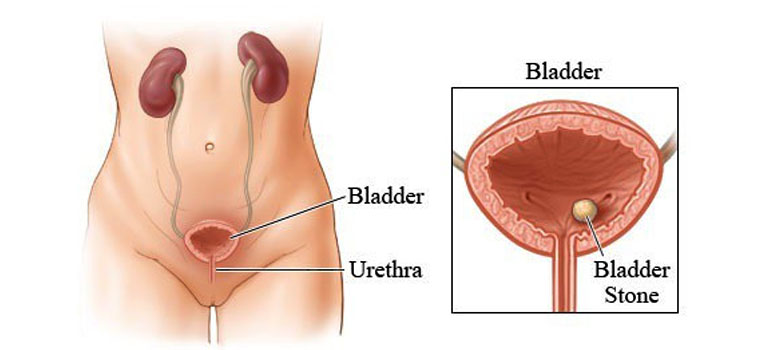
The Urinary Bladder Stone can either travel from kidney and ureter into the ladder or can be formed in urinary bladder secondary to obstruction in passage.
These bladder stones are usually associated with retention of urine, but they can form in healthy individuals without evidence of anatomic defects, strictures, infections, or foreign bodies. The presence of upper urinary tract calculi is not necessarily a predisposition to the formation of bladder stones.
The presentation of vesical calculi (urinary bladder calculi) varies from completely asymptomatic to the following symptoms
X-ray KUB will show the presence of the stone in the pelvis
Sonography will show the presence of the stone with clue to formation of bladder stone like enlarged prostate.
Percutaneous Suprapubic Cystolithotomy.
In case of larger bladder stone, the percutaneous suprapubic route is selected. This allows the use of shorter- and larger-diameter endoscopic equipment like nephroscope (usually with an ultrasonic lithotripter), which allows rapid fragmentation and evacuation of the calculi. Often, a combined transurethral and percutaneous approach can be used to aid in stone stabilization and to facilitate irrigation of the stone debris.
Open Suprapubic Cystolithotomy.
This procedure become the preferred mode of treatment for very large or multiple bladder calculi associated with enlargement of prostate.